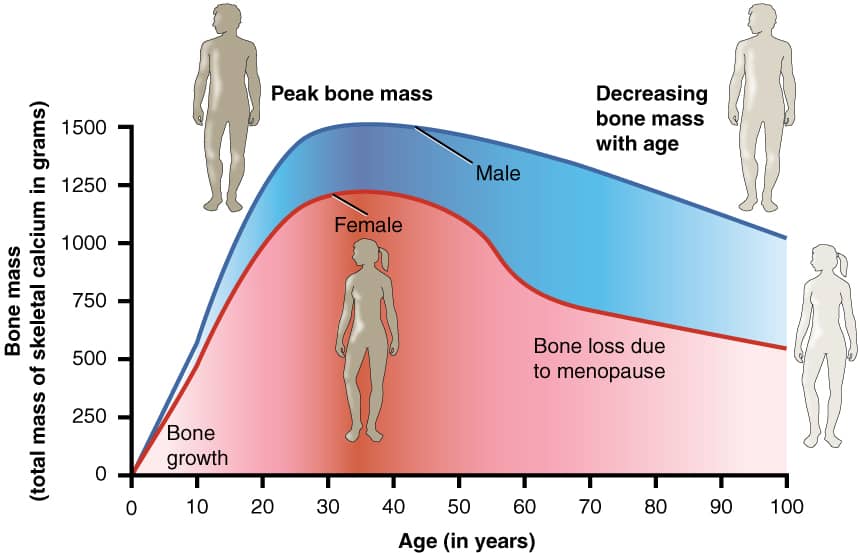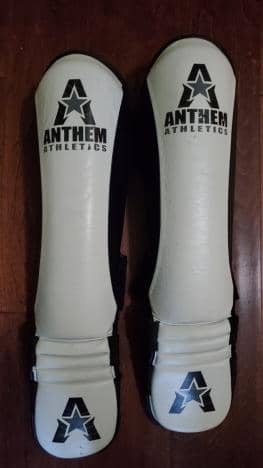While this isn’t something I’ve personally had happen to me in life, people around me have. Losing your bone density is something that happens as you age. Low bone density is when your bone density is lower than normal, but not low enough to be considered osteoporosis.
You have to consider ways of reverse bone loss at this point. If you continue to lose bone density you will be at risk for osteoporosis. Exercise is known to increase your bone density. But, not all exercises are equal when it comes to building healthy bones.
What Type of Exercises Increase Bone Density?
Characteristics of exercises that have a large impact on increased bone density usually involve weight bearing. Weightlifting and gymnastics increase bone density thanks to the amount of force or impact exerted on the muscles. High impact exercises done in repetition are also effective in building bone density. Jumping exercises and plyometrics are in this category due to, once again, their high impact nature. Finally, exercises that strain the muscle frequently are also effective bone builders. This is where you can count running and jumping rope, thanks to their repeated impact on the bones that happens during a session of either.
As you can see, the rate, amount, and frequency of strain during these exercises are all important in building bone density. As of yet, we don’t really know which of the three is the most important. But twenty minutes of these exercises a week can increase bone density. Doing one of each type of these exercises during the week will have the best benefit.
For example, jumping twenty times a day with thirty seconds of rest between each jump will provide an increase in bone density. More so than running or jogging, according to research out of Brigham Young University. These researchers found that running and jogging have less bone density impact because of the repeated bone stress. So if you jog a lot daily, you should make sure to throw in some jumps as well. If your bone density issues are in your hands and shoulders, buy a heavy bag and wail on it for a few minutes every day.
Even if you’ve been sedentary all of your life you can regain bone strength. Evidence shows that exercise can build and maintain bone density at any age. People have increased bone density by doing as little as weight lifting two or three times a week thanks to the force of muscle pulling against bone.
Specific Bone Density Exercises
Finally, I’m going to leave you with the two exercises that have shown the most increase in bone density. The squat and the jump rope.
The squat has been shown to increase everything from bone density to testosterone. To perform the squat, you start by facing the bar and grabbing it tightly with a grip just wider than your shoulders. Next, you dip under the bar and put it onto your upper back. Make sure you puff your chest out so that you don’t lean forward and lose balance. Then, unrack the bar by straightening your legs and stepping back with locked hips and knees. Finally, it’s time to squat. Take a big, deep breath and hold it in your stomach as you squat down and push your knees out. Keep your lower back neutral while you decend. Squat until your hips are below your knees to get full depth, and then squat back up. Lock your knees and hips out at the top and breath.
And to put a nice little bow on everything, we’ll end with the simple jump rope. Now, if it’s your fist time learning how to use one of these you’ll want to start off with a slightly weighted rope. The cheap plastic ropes are so light you’ll barely be able to feel them, which will lead to battered toes. As for the basic movements, you’re going to want to jump one or two inches off the floor to give the rope just enough space to slip under your feet. Don’t jump too high, and don’t let your heels touch the floor.
You stay on the balls of your feet for the whole exercise. Make sure to keep your elbows tight to your side, the movement of twisting the ropes should come from your forearms and wrists, not your arms. Until you master the tope, feel free to jump without it if you run out of energy until you’re ready to use it for a whole workout.


